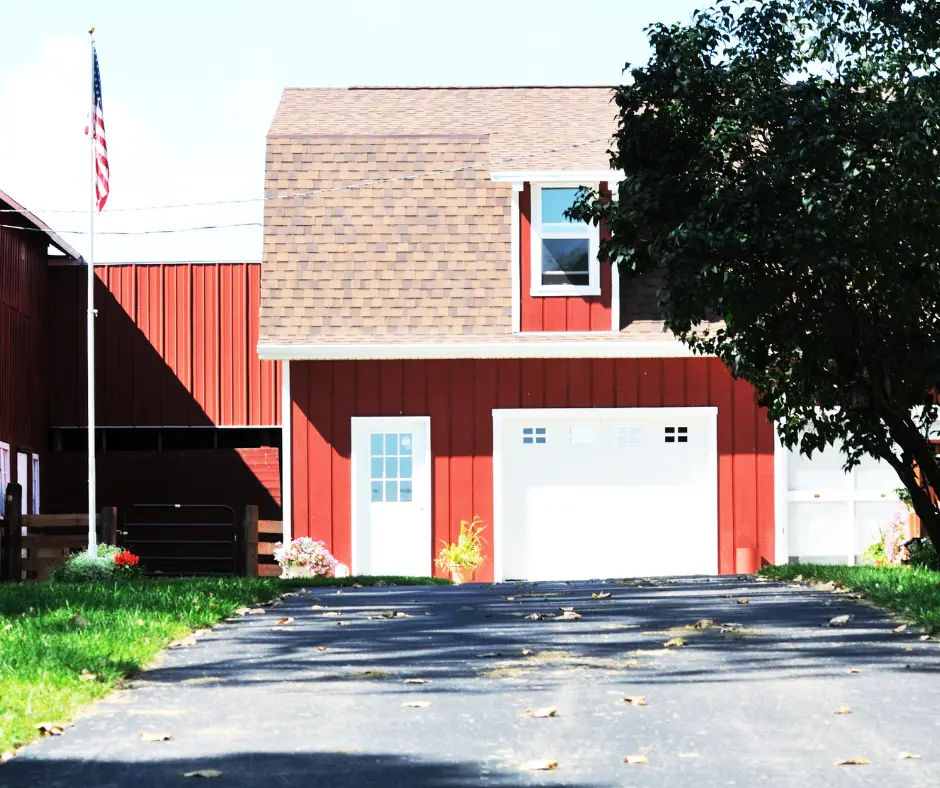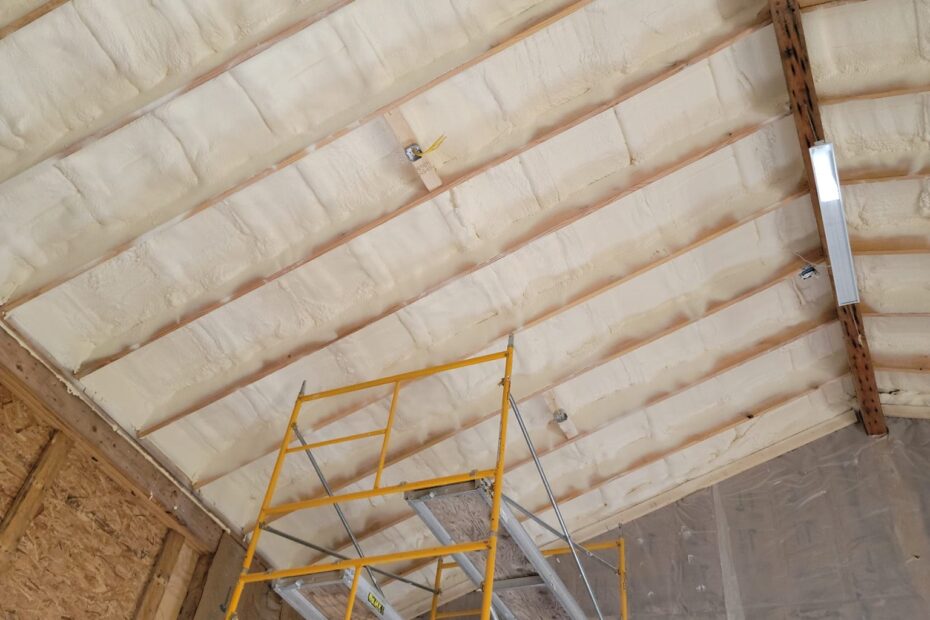Understanding the importance of insulation for pole barns
Insulation in pole barns is crucial to maintain a comfortable temperature and protect stored items. Proper insulation helps in keeping the heat in during the winter and out during the summer. It also prevents condensation, which can lead to rust and mold. Good insulation can reduce your energy bills and make the barn more comfortable to work in.

Different types of insulation for pole barns
When insulating a pole barn, you have a few options to choose from. Here are the different types of insulation typically used for pole barns:
- Fiberglass Insulation: This is the most common type of insulation used in pole barns. It is relatively affordable and offers good thermal performance.
- Spray Foam Insulation: This type of insulation provides excellent thermal resistance and can fill small gaps and crevices in the building structure, offering a more complete seal.
- Reflective Insulation: This type of insulation works by reflecting heat away from the building, and it is often used in conjunction with another type of insulation for enhanced performance.
- Radiant Barrier Insulation: This type of insulation is designed to block radiant heat transfer and is effective in hot climates.
When choosing the best insulation for your pole barn, consider factors such as your budget, climate, and the specific needs of your building.
Considerations for choosing the best insulation for pole barns
When choosing the best insulation for pole barns, it’s essential to consider factors such as the climate of your area, the purpose of the pole barn, and your budget. Here are a few key points to keep in mind:
- Climate: Depending on whether you live in a cold or hot climate, you’ll need insulation that provides adequate thermal protection.
- Purpose: If your pole barn is used for storing temperature-sensitive items or as a workspace, you’ll need insulation that offers both thermal and sound control properties.
- Budget: Different types of insulation come with varying costs, so consider your budget when choosing the best option for your pole barn.
By taking these considerations into account, you can select the best insulation for your pole barn that meets your specific needs and requirements.
Factors affecting insulation performance in pole barns
The performance of insulation in pole barns is influenced by several factors. These include the type of insulation material used, the thickness of the insulation, and the proper installation of the insulation. Additionally, the climate in which the pole barn is located also plays a crucial role in insulation performance. Finally, the design and construction of the pole barn itself can impact the effectiveness of the insulation.
Weather and climate considerations for pole barn insulation
Pole barns are often exposed to various weather conditions, so it’s important to choose insulation that can withstand these elements. Here are some key weather and climate considerations for pole barn insulation:
- Moisture Control: Pole barns can be prone to moisture build-up, so it’s essential to choose insulation that can effectively manage and prevent moisture accumulation.
- Temperature Regulation: Insulation should help maintain a comfortable temperature inside the pole barn, especially in extreme weather conditions.
- Durability: Since pole barns are exposed to the elements, the insulation should be durable and able to withstand harsh weather conditions such as storms, strong winds, and heavy snow.
Consider these factors when selecting the best insulation for your pole barn to ensure optimal protection and comfort.
Installation process for the best insulation for pole barns
When it comes to insulating your pole barn, the installation process will depend on the type of insulation you choose. Here are the basic steps for installing the best insulation for pole barns:
- Selecting the insulation: Choose the best insulation material for your pole barn, such as fiberglass, spray foam, or radiant barrier insulation.
- Preparing the area: Clear the area where the insulation will be installed and ensure it is clean and free of debris.
- Measuring and cutting: Measure the insulation material to fit the dimensions of your pole barn and cut it accordingly.
- Installation: Place the insulation material between the wall or roof framing, ensuring a snug and secure fit.
- Sealing gaps: Seal any gaps or seams in the insulation to maximize its effectiveness.
- Test and evaluate: Once the insulation is installed, test and evaluate its performance to ensure it meets your expectations.
The installation process for the best insulation for pole barns will help maintain a comfortable temperature inside the barn while also providing energy efficiency.
Benefits of proper insulation for pole barns
Proper insulation for pole barns provides several benefits, including:
- Energy Efficiency: Insulation helps in maintaining a stable temperature inside the pole barn, reducing the need for excessive heating or cooling.
- Cost Savings: By minimizing the energy required for climate control, proper insulation can result in significant cost savings over time.
- Condensation Control: Insulation helps prevent condensation buildup, which can protect stored items and equipment from moisture damage.
- Noise Reduction: Insulation can effectively reduce outside noise, creating a quieter and more comfortable indoor environment.
- Increased Comfort: Insulation helps maintain a comfortable temperature inside the pole barn, making it a more pleasant space for various activities.
Maintenance tips to prolong insulation effectiveness
Insulation plays a crucial role in maintaining the temperature inside your pole barn. To prolong the effectiveness of your insulation, consider the following maintenance tips:
- Regularly inspect the insulation for any signs of damage, such as tears, gaps, or compression.
- Seal any gaps or cracks in the insulation to prevent air leakage and maintain a consistent temperature.
- Monitor for any moisture buildup, as it can reduce the insulation’s effectiveness over time.
- Keep the insulation clean and free from debris to ensure optimal performance.
- Consider adding a vapor barrier to prevent moisture from affecting the insulation.
Comparing costs of different insulation options for pole barns
When considering insulation options for your pole barn, it’s helpful to compare the costs of different materials. Here are some factors to consider:
- Fiberglass insulation is generally the most cost-effective option.
- Spray foam insulation tends to be more expensive, but has many benefits.
- Reflective insulation can vary in cost but give us a call to discuss your project.
- The overall cost will depend on the size of your pole barn, the specific material you choose, and any additional installation expenses related to your project details.
Conclusion: choosing the best insulation for your pole barn
When choosing insulation for your pole barn, it’s important to consider factors such as the barn’s location, the building’s intended use, and your budget. Choosing the right insulation can help regulate the temperature inside the barn, prevent condensation, and reduce energy costs. Here are some key points to consider before making your decision:
- Location:
- Determine the climate and weather conditions in the area where your pole barn is located. This will help you choose insulation with the appropriate R-value for effective thermal resistance.
- Building Use:
- Consider how the pole barn will be used. If it’s a storage space, animal shelter, or workshop, you may need insulation that provides moisture control and durability.
- Budget:
- Compare the initial cost and long-term savings associated with different types of insulation materials. Keep in mind the potential energy savings and maintenance requirements.
By carefully considering these factors, you can make an informed decision and choose the best insulation for your pole barn.
